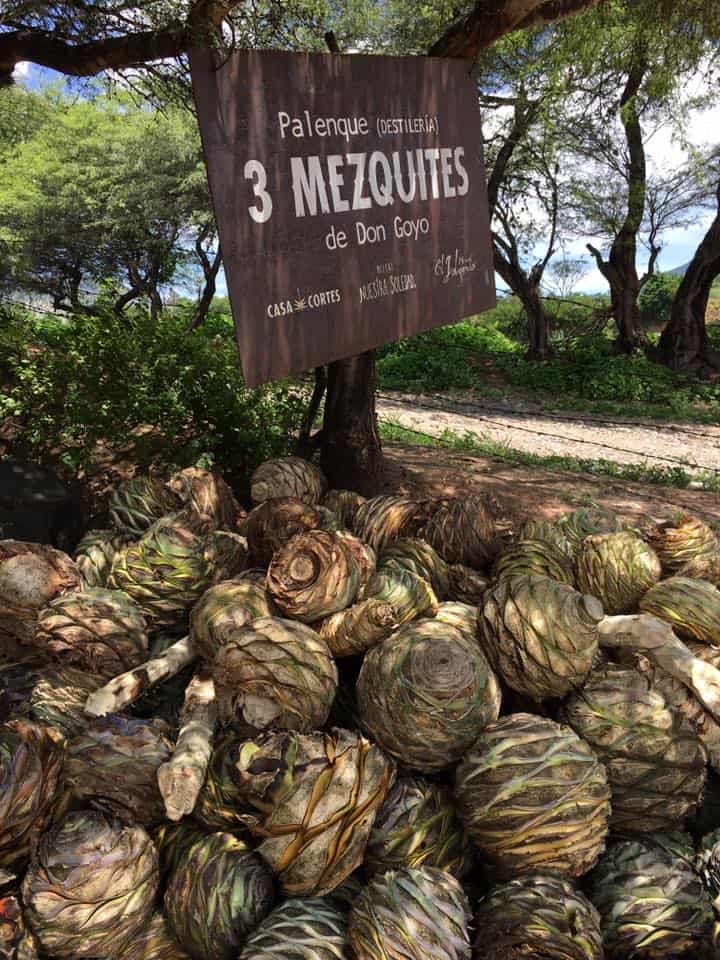
Over my years of visiting Oaxaca, Asis Cortes and I have never managed to be here at the same time. This trip is no different, but luckily, I was finally able to get out and visit a few of the palenques they work with. Special thanks to Puro Burro and Zack Safron who used to be a San Francisco based bartender. He has since made the leap to Oaxaca which is quite a trend with bartenders. Zach occupies a fascinating spot in the mezcal world: He works closely with Puro Burro which leads trips to Oaxaca geared toward the hospitality industry, and is a bartender at Mezcalogia, Asis’ Oaxaca mezcaleria. Zach acts as a kind of connector for the Casa Cortes “empire” with Mezcalogia and the world outside of Oaxaca. His love and enthusiasm for mezcal, and Oaxaca, cannot be overstated.
Casa Cortes has three labels under its business:
- Agave de Cortes: A larger volume, lower priced mezcal.
- Nuestra Soledad: A single maker, single village middle volume mezcal.
- El Jolgorio: The company’s premium mezcal line made up of very small production bottlings made from wild agaves.
The Cortes family has been making mezcal in Oaxaca for five generations, and is one of the few brands in the U.S. market that is mezcalero-family owned. In addition to making much of the mezcal they bottle, they also work with a broad network of other mezcaleros from various regions in Oaxaca including the Valles Centrales, Zoquitlan, Lachiguilla and more, which means they have a great representation of the flavors found in these different areas. The Agave de Cortes line was re-launched into the market almost two years ago after a bit of a hiatus. This three prong approach to the business, with the different lines addressing the different markets is business saavy. Several brands have introduced a large line of expressions, but few with the breadth and target marketing that Casa Cortes has.
We arranged a day to head out to Matatlan and then San Balthazar Guelavia. I was once again joined on the trek by Mariana Garcia, the creative force behind all of the Mezcalistas designs. Our burro today was the classic Oaxacan work horse – a dust covered red Nissan Tsuro, the car of choice for every taxi and colectivo driver in the state. It had the obligatory cracked windshield and tinted windows, and of course a stick shift. We headed out of the city and onto the Pan American Highway, or freeway 190, the main road south. It was a blissfully easy drive, discounting the normal topes that make for a jarring experience if you don’t anticipate them, and got to Matatlan in about 45 minutes. If there is any town that exemplifies the mezcal boom, this is it: Palenques line the road and are expanding at crazy rates. They are interspersed with new comedors that welcome the cars and tour buses filled with visitors.
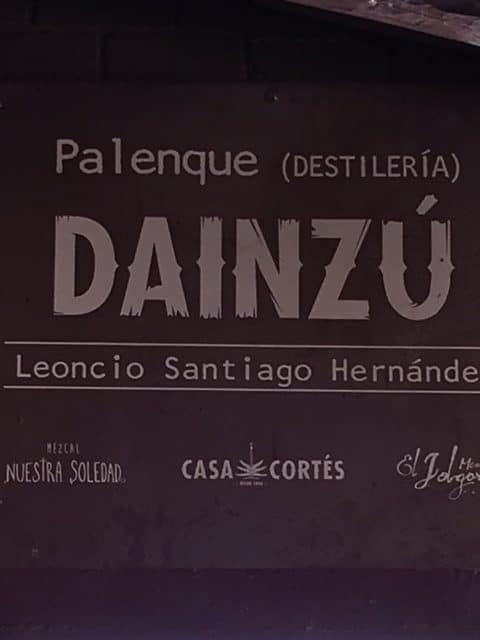
Our first stop was at Dainzú Palenque, with maestro mezcalero Leoncio Santiago Hernandez. Don Leoncio makes mezcal for the Agave de Cortes label. He was not at the palenque that morning. Instead he was tending to another critical element of the mezcal business, he was out in the fields planting agave. But we were able to poke around and see perhaps some of the largest espadin piñas I have seen.
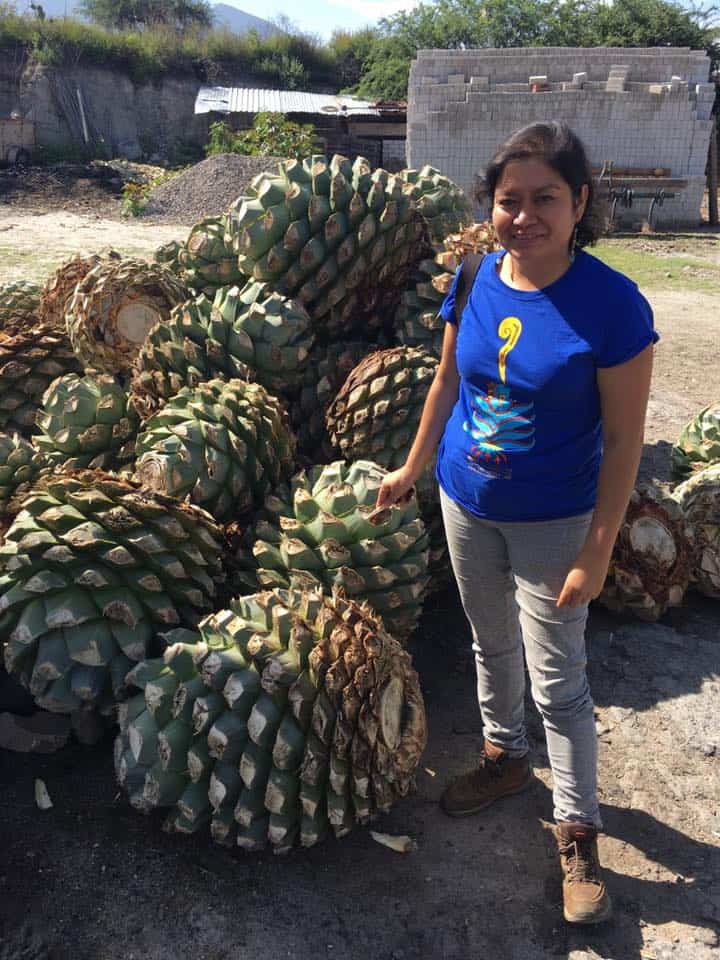
There is also a gigantic stockpile of wood, which Zack explained, is for the year. In order to buy the sustainably certified wood, you need to buy in bulk, for the year, so planning is essential. This palenque could pump out a lot more mezcal than it currently does. Don Leoncio chooses not to run it 24/7, but the potential is there.

We jumped back into the car and headed out to San Balthazar, a town I have always wanted to visit, not only because it produces a lot of mezcal, but also because it is on the way to gorgeous cascades that empty into a great swimming hole. Side note, lots of rain this rainy season means no access to the spot. I am looking forward to checking it out when I am back in December.

The drive is pleasant and winds along a river. The hills are a verdant green, and we are reminded of the wildness when a snake slithers across the road. We arrive in town, turning this way and that to arrive to the other side, where the paved road ends and we drive a short distance to arrive at 3 Mezquites, the palenque of Don Goya. He produces mezcal for both the Nuestra Soledad and El Jolgorio labels. We are greeted by his son, Rodrigo, who is tending the still while Don Goya, like his colleague Don Leoncio, is out planting agave.
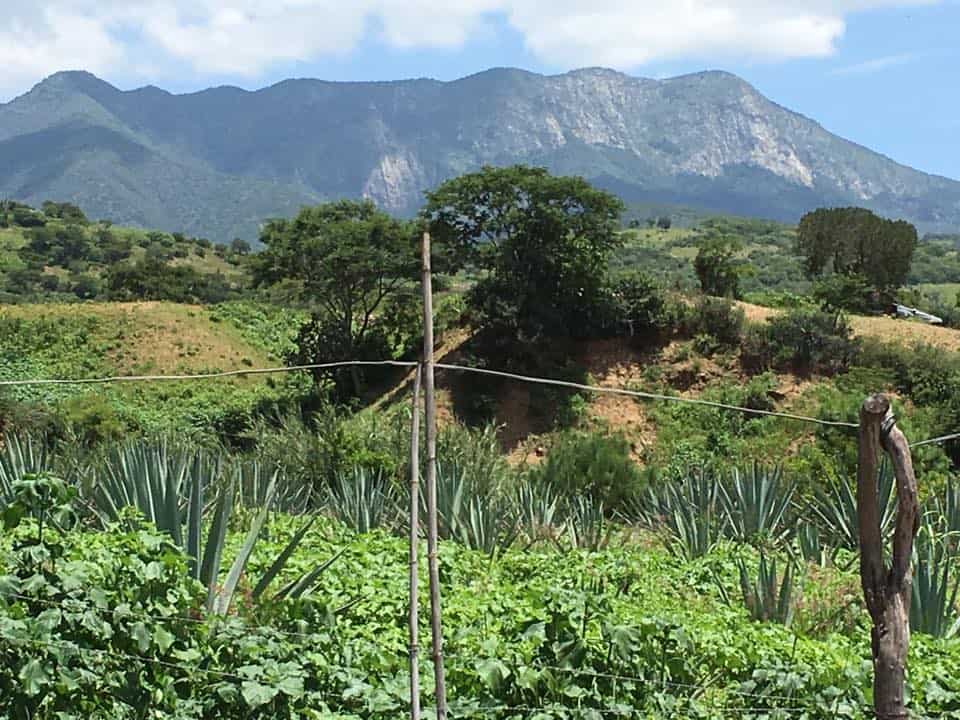
Rodrigo is part of the next generation mezcaleros – at 21 he is young, proud of his mezcal and Oaxaca, and fully integrated in the ways of Facebook. When you visit mezcaleros like him it’s clear that there is an underlying clash of ideas between the old and new mezcaleros. The sheer number and type of changes between generations marks them even more dramatically than elsewhere in the world. Here in rural Oaxaca in the midst of the mezcal boom the real questions are how to embrace the change, how to respond to it, and how to think big and outside of what is around you. This is what will ultimately change the industry of mezcal, when these young makers are in full control. That day is coming soon.
The palenque itself is neat, with good ventilation and a cement floor. When we arrived they were distilling a tobala. Two puppies chase each other, and when bored, pull at my shoelaces and jean cuffs. I am curious to understand how well the different palenques in the town work together. One example, a single family of nine brothers, each with his own palenque, each producing for different brands including Mezcal Union, Mezcal Koch, El Silencio, and Alipus. I ask if that creates an unfair balance among the brothers if they are operating separate businesses – what happens if one makes more than the other? Family discord is not unusual, and these circumstances can exacerbate the situation. We taste through mezcals he has on hand – an espadin, a madrecuishe, a tepextate (which Mariana lovingly savors), and finally a tobala. We even taste the first distillation of that tobala fresh off the still, it tastes sharp and its body is very watery.
Rodrigo is initially shy and reserved, but becomes more animated as Mariana peppers him with questions about life in the village and his experiences in making mezcal. We talk about whether or not people are returning from the US. We have all heard stories about there being more opportunities with the mezcal boom. Rodrigo semi smiles and carefully answers that while some people are returning, it is not necessarily because of mezcal, because you still make more money in the US than you can make here. He thinks the single biggest way for brands to support the communities is to pay fair prices for mezcal and to look at how to support education for kids.
Schools in these smaller pueblos are extremely challenged and often rudimentary. It is not uncommon for children to live with family members in the city of Oaxaca and attend school there where there are more resources. Public education is a complicated issue in Oaxaca and, frankly, in all of Mexico. If the industry wants to look at how to support education, it would probably need to look at specific programs tailored to locations and organizations that have the experience of implementing these grassroots community projects. In one case a scholarship program may be the critical need, another may be begging for music or arts programs, yet another a tutoring system. Don Goya himself recently purchased several computers that kids in the community can come over to use. It is a good step.
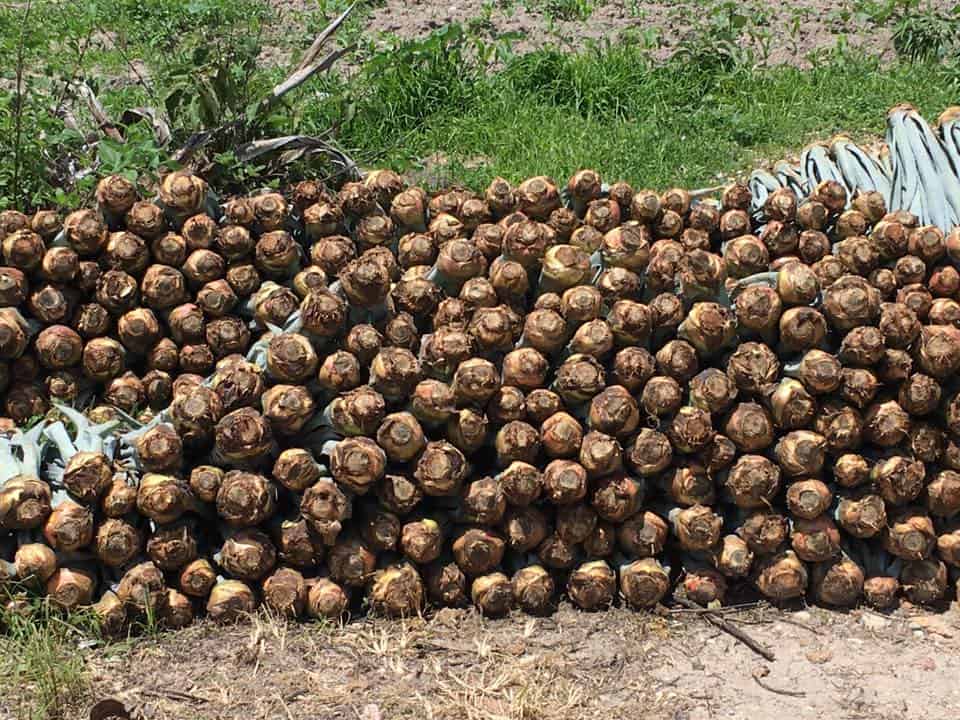
As we are talking and tasting, Rodrigo’s grandfather comes into the palenque and stretches out on the hammock inside. He is retired but seems to find solace here. Don Goya returns from the fields with the news that the group that oversees the community lands has put a moratorium on the harvesting of any wild agaves for a period of time. This leads to a discussion of sustainability: Rodrigo believes that any effort at encouraging sustainability must emerge from the community because all the knowledge already exists there. Mezcaleros, farmers, and other members of the pueblo already know the land, understand growing cycles, and have a long memory for the different growing and product methods. He tells us that the experience is there and, in so many words, that they don’t need to re-invent the wheel. Don Goya then departs and we finish our conversation with Rodrigo by asking what he wants for the future. His response is another clear indicator of the generational shift; he says “Maybe my own brand.” He has seen the world beyond rural Oaxaca and can now contemplate these ambitions.
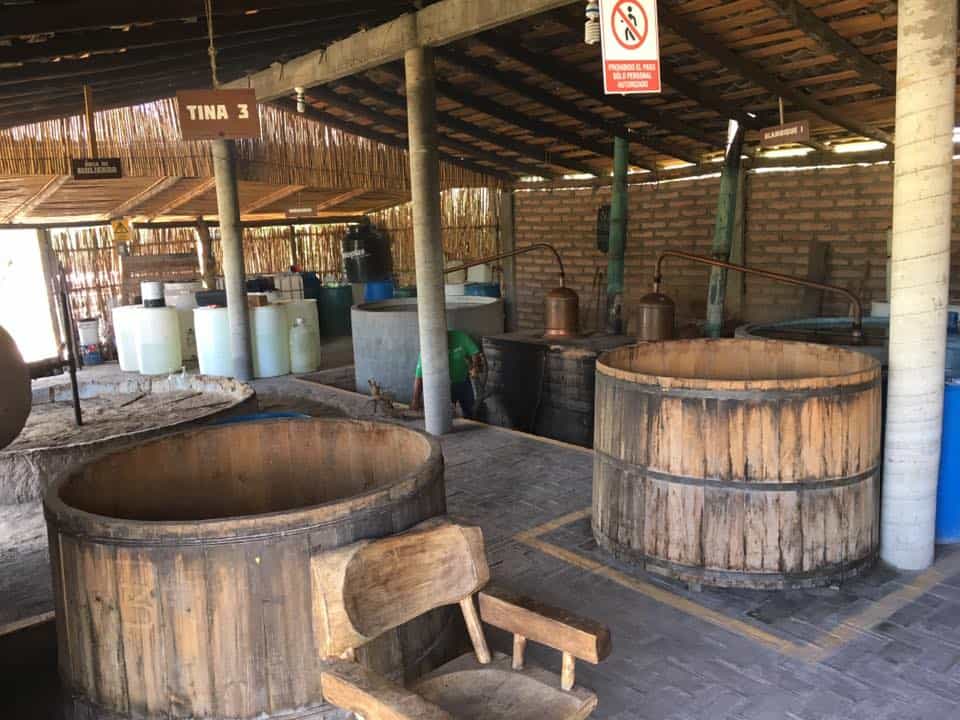
We stop in Matatlan to have the necessary quesadillas and empanadas. They never taste the same in the United States or even from pueblo to pueblo in Mexico. Each cook’s masa contains subtle flavor variants which emerge from different types of corn. And then there are the cheeses and salsas – all the ingredients express local terroir and culinary traditions.
After we are refreshed we head to the main Casa Cortes facility which includes a palenque with a lab, bottling, labeling, and shipping equipment. Plus there’s a field to test growing methods. They are currently working on a special “comida,” which means ‘meal’ in English, for the agave plants. It’s a nutrient rich soup that feeds directly into the agave plant. There is also an area for the family’s other business, purified water, which the Cortes family created after the last mezcal boom fizzled.
Employees are beginning to arrive after their midday break. I am surprised to see that an operation as large as this one still hand applies all labels. “It’s jobs for the community,” Zack tells us but we still can’t help but think there is a way to automate this and still retain the jobs. We have a chance to talk to Don Valentin Cortes and ask about his reflections on this boom versus that last one which fizzled due to a confluence of issues – the collapse of the peso, the ravenous demand from Jalisco for agave which denuded many fields in Oaxaca, NAFTA’s rolling impact as it pushed people to move to the cities and emigrate to the U.S. in search of work, and of course a small national market that did not rush to embrace mezcal for the long term.
“This is different,” he says. “We have an international market that we never had before and now that they have tasted mezcal, there is no going back.”


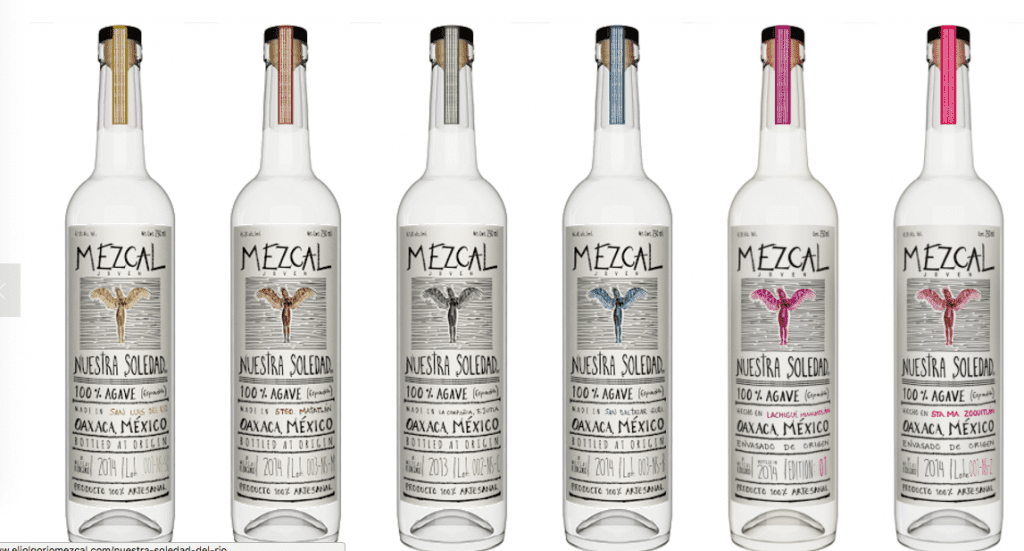

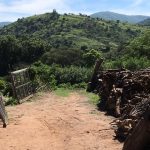
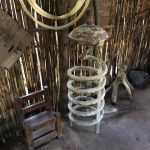
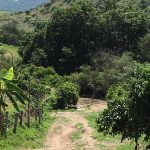
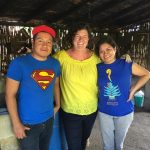

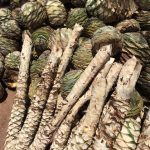
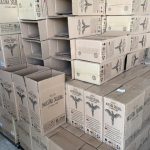
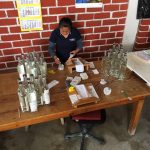
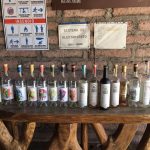
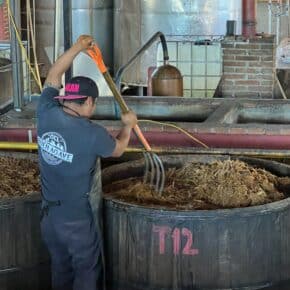

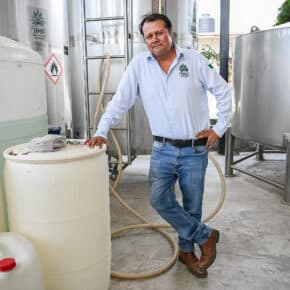









Susan, great report! I’ve been to most of those stops with Asis and loved every minute of it! Hopefully you will connect with him as well……